St Bridgid’s Well, Mullingar, County Westmeath
There are at least a hundred wells dedicated to St Brigid, Ireland’s second, and increasingly most popular, patron saint. We’ve visited a few on this pilgrimage already (this is one of my favourites) and there are more to come. This week, we’re in the Irish midlands.
With apologies to the good citizens of Westmeath, I’d have to say that the Irish midlands are not the most exciting part of the world. Or even of the country. Ireland is shaped like a bowl: around the edges are mountains, hills and cliffs, and often long white beaches. In the west and north of the country especially these are spectacular, wild, Atlantic landscapes. The middle, though, is flat as a pancake. It’s bog for the most part, and agricultural lowlands. With the decline of farming, there are a fair number of depressed, half-empty towns strewn about. Despite the efforts of various local authorities, this is not much of a tourist draw.
But this is not necessarily a bad thing. A lack of coach parties and green leprechaun hats is a plus, of course. And when you find a hidden gem in humdrum places, it feels like a special treat.
This iteration of St Bridgid’s Well hides just outside the town of Mullingar, down a lane next to a fish farm. It’s neat and well-tended. There is a wellhouse, the stations of the cross in carved stone, a few signboards and a small outdoor chapel with a stone altar, built in the shape of a clochán from the Atlantic shore. It looks like an upturned boat:
Notice the cross carved into the ground: it took me ages to spot it. The water from the well flows into it, and when you stand at the well and look towards the chapel, it’s impossible to miss.
The well itself is blessedly primitive. It looks like a neolithic barrow:
It reminds me of one of the most famous sites of the Irish midlands, the burial mounds at Newgrange. Whether the similarity is deliberate, I don’t know. You’ll notice the niche in the rock on the right which contains a little pan with a handle, for scooping out and drinking the water. This man arrived while we were there, stooped to drink and then splashed the water all over his head. Maybe this is a venerated ancient tradition, or maybe he was just hot and thirsty.
Inside the stone chapel, things get dark and damp and slightly more mysterious, which is of course how I like them:
The place is full of little niches filled with statues and offerings:
Some of which have clearly been here since St Bridgid’s Day, on the 1st of February:
And some of which offer wise advice:
There’s a pleasing lack of neo-paganism here. Despite the ongoing re-invention of St Bridgit as an ass-kicking feminist goddess who happens to have the same values as modern Western liberals (I wrote about this recently here) this well remains a Catholic shrine. I’d guess that there aren’t many neo-pagans in the small towns of the Irish midlands.
The standing stone at the head of the wellhouse makes an explicit link between the waters, the faith, the place and the people:
I’m not a Catholic. I don’t even know what to do with the stations of the cross. But I like visiting places like this. They are simple, in the best way: rooted in their place, somehow timeless. Timelessness, I know, is an illusion in this dimension, but it’s an illusion which, on a sunny day in July, I’m happy to carry with me for a while.


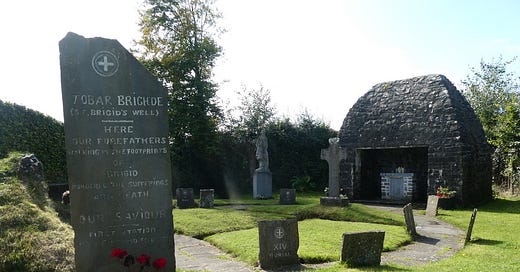



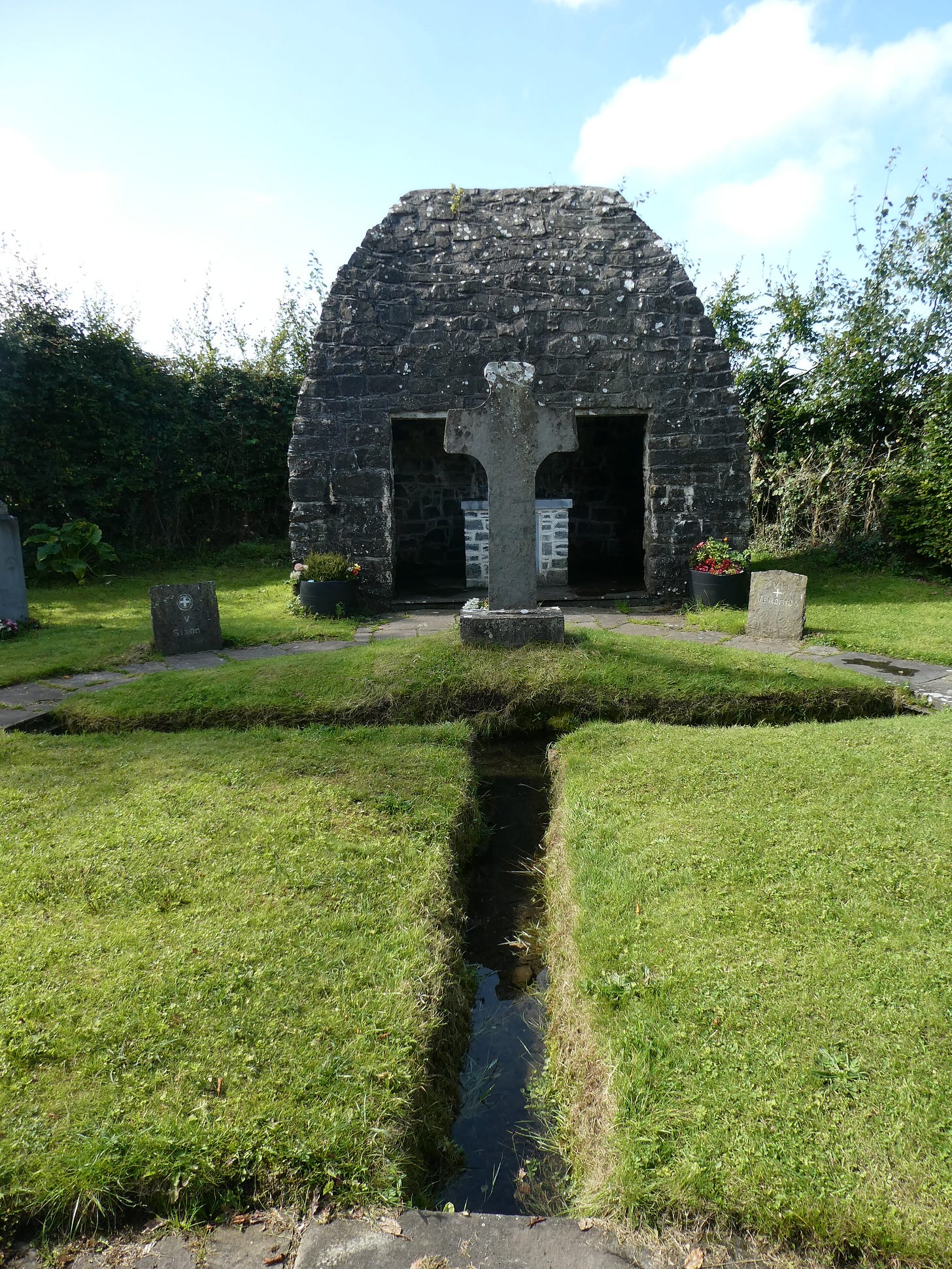
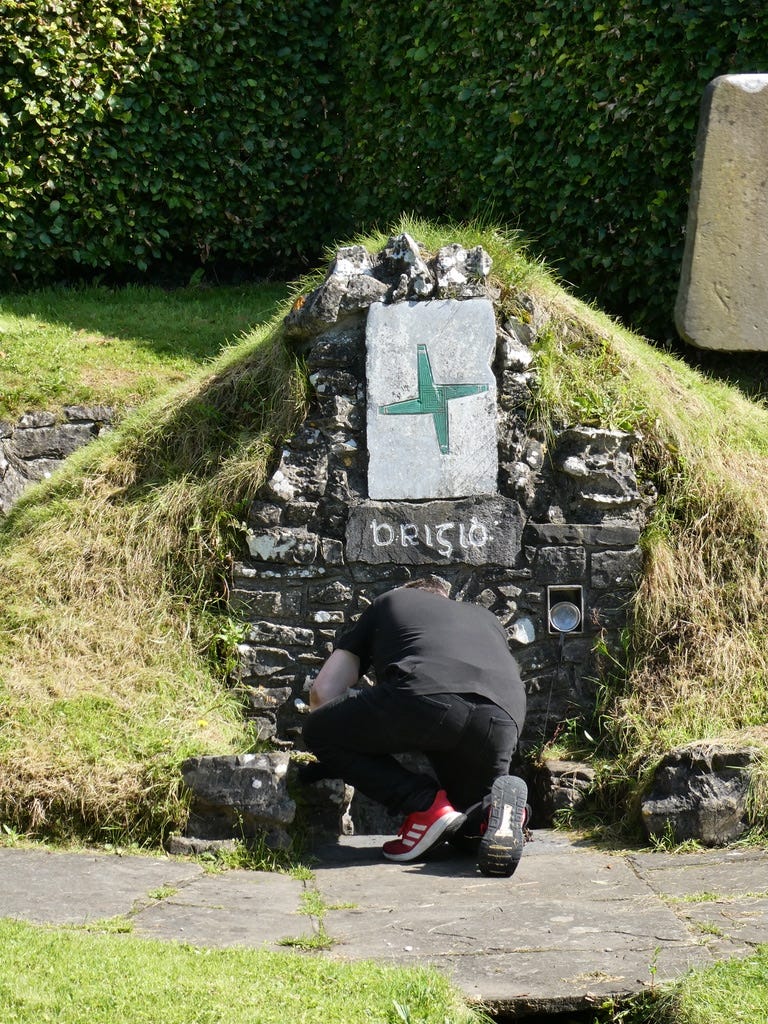
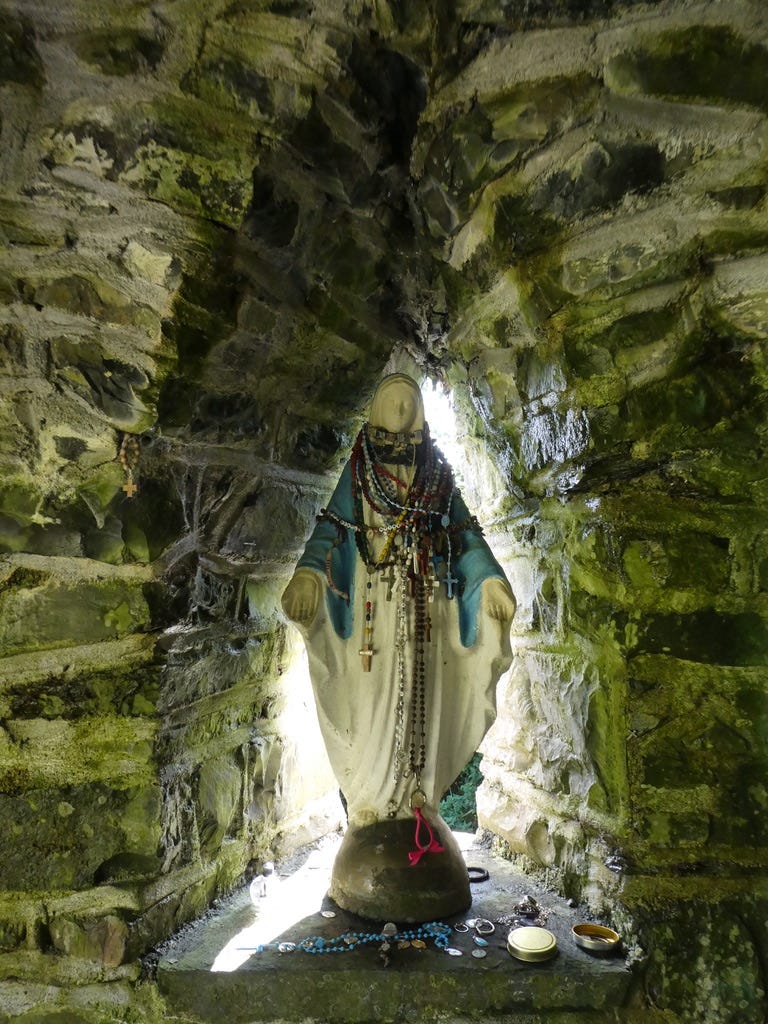
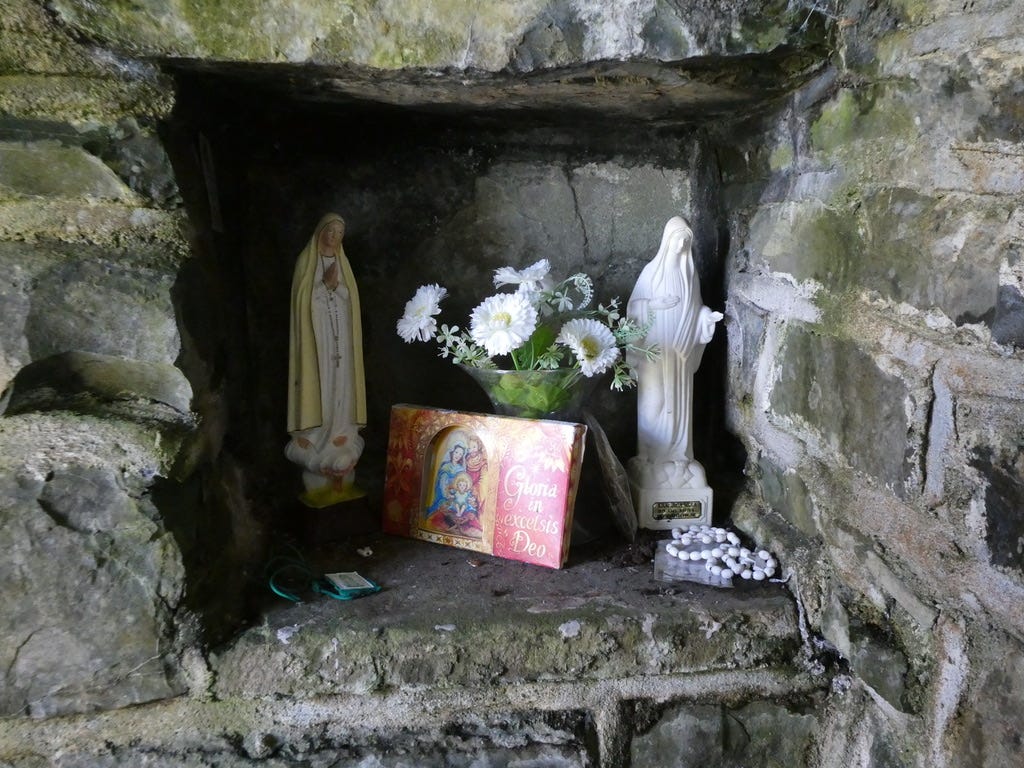
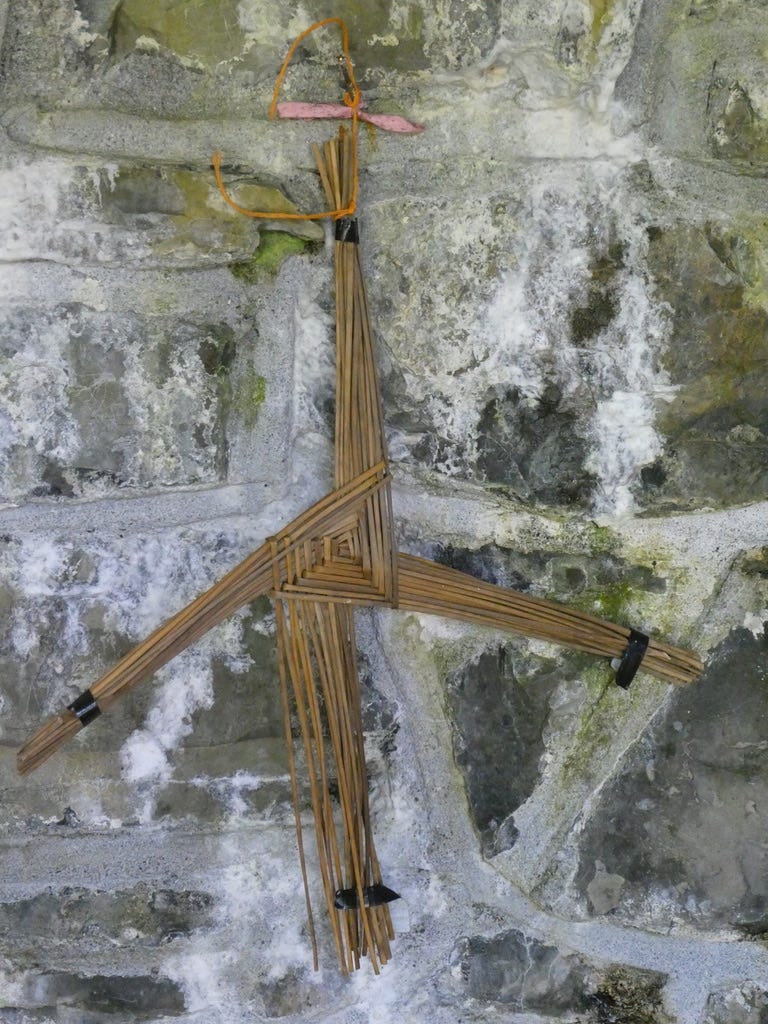
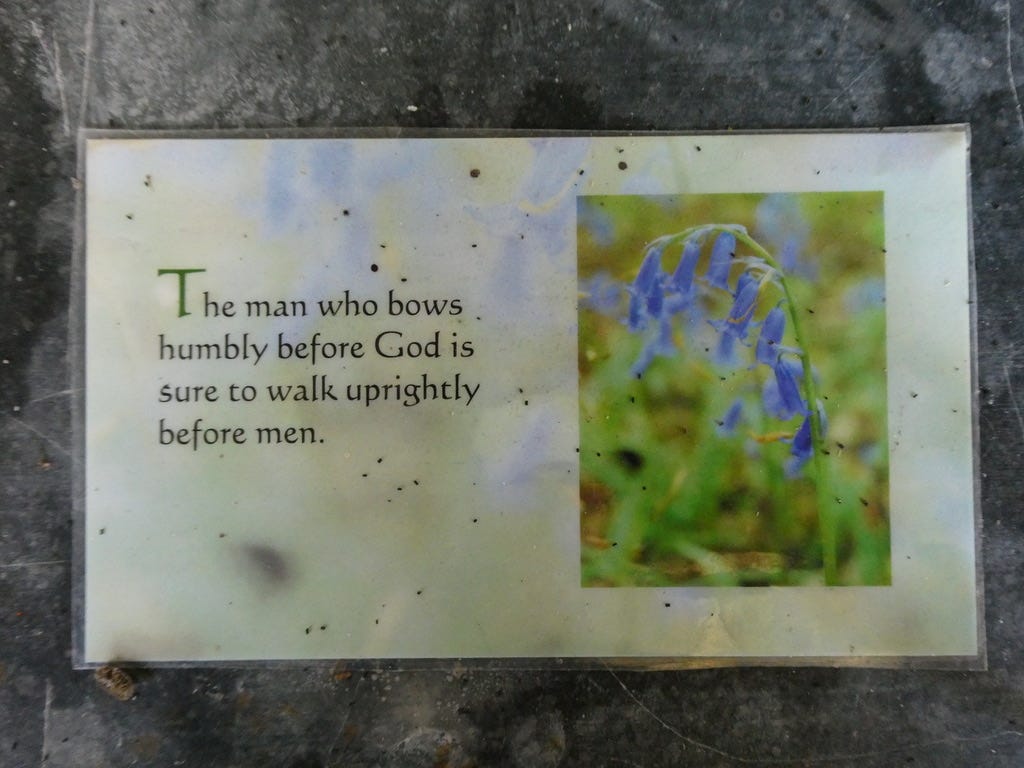
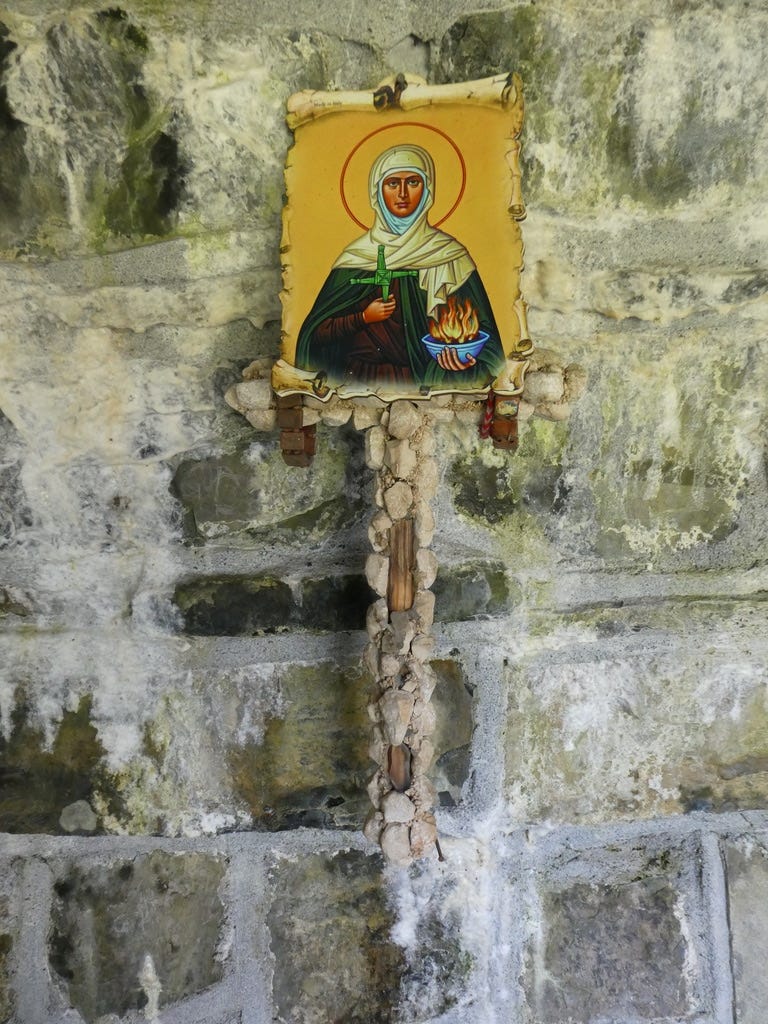
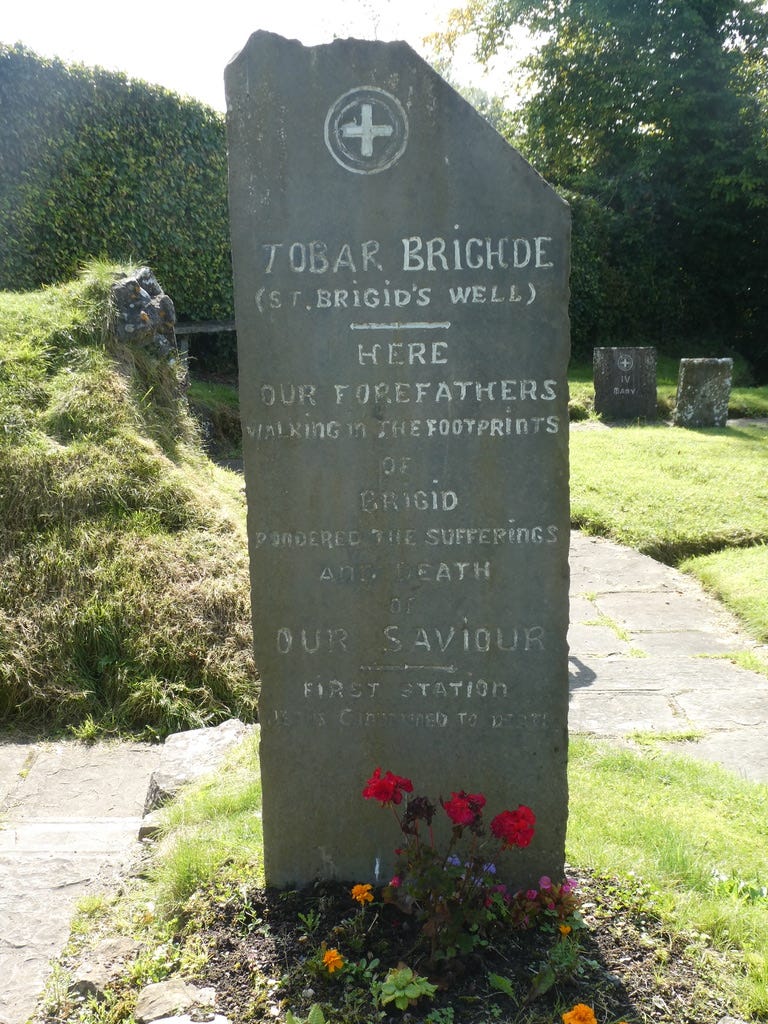
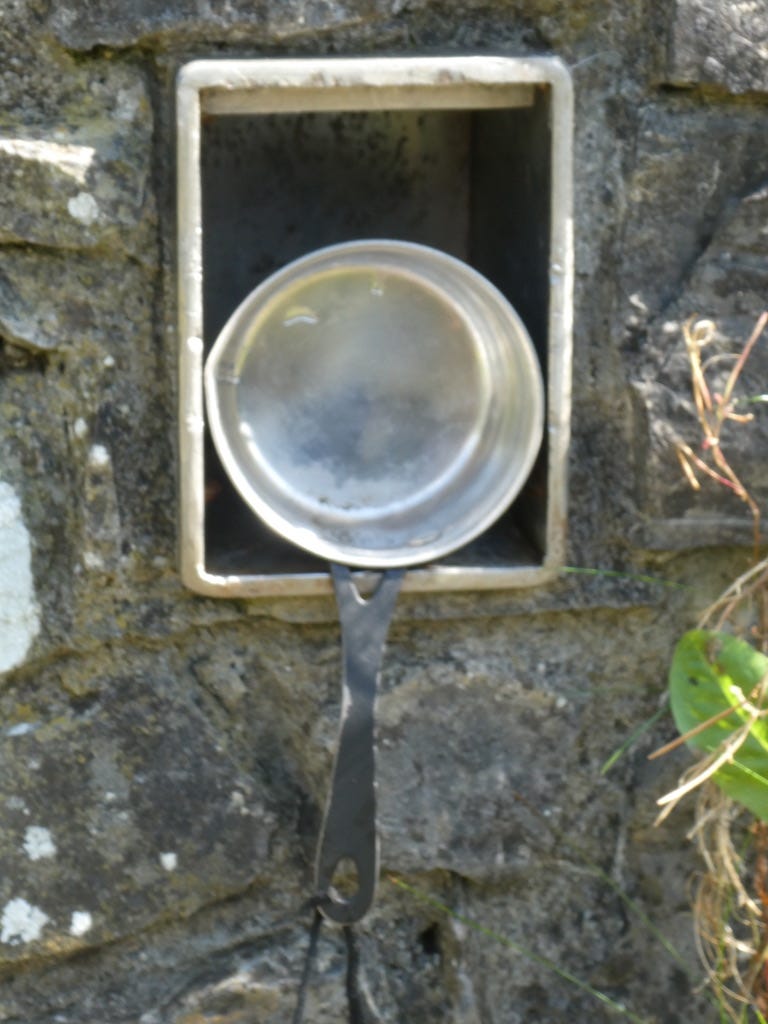
Im from the town which this well is located near to. I now live abroad. In my youth (early 1990s) my friends and I would go on long cycle trips out the countryside and we often pass this well, and drop in for a drink. We all knew it was holy and special there. Then we were not skeptical of the church or mysteries or old legends.
Since Paul started to write about holy wells, I hoped he would visit St Bridget’s well. I’m glad he found it so pleasant. I will visit it myself this summer with my kids.
"Threefold is the step of time:
The future comes hesitantly,
the now is gone immediately,
the past stands still eternally." Friedrich Schiller
I carrie timelessness with me every time I visit old cemeteries. It may be an illusion but it seems to be real when the noise fades away and everything around me slowes down. In my experience there are places in this world where time stands still.